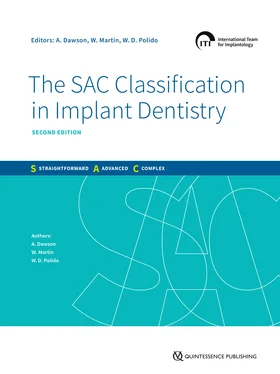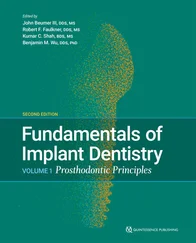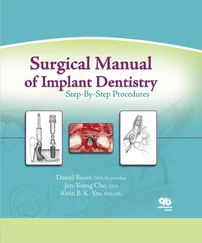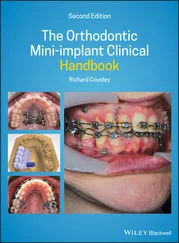The SAC Classification in Implant Dentistry
SECOND EDITION
The SAC Classification in Implant Dentistry
SECOND EDITION
A. DAWSON, W. MARTIN, W. D. POLIDO

German National Library CIP Data
The German National Library has listed this publication in the German National Bibliography. Detailed bibliographical data are available at http://dnb.ddb.de.

© 2022 Quintessenz Verlags-GmbH
Ifenpfad 2–4, 12107 Berlin, Germany
www.quintessence-publishing.com
All rights reserved. This book or any part thereof may not be reproduced, stored in a retrieval system, or transmitted in any form or by any means, whether electronic, mechanical, photocopying, or otherwise, without prior written permission of the publisher.
| Illustrations: |
Ute Drewes, Basel (CH), www.drewes.ch |
| Editing: |
Quintessence Publishing Co, Inc, Batavia (US) |
| Layout and Production: |
Quintessenz Verlags-GmbH, Berlin (DE) |
ISBN 978-1-78698-110-3
The materials offered in The SAC Classification in Implant Dentistry are for educational purposes only and intended as a step-by-step guide to the treatment of a particular case and patient situation. These recommendations are in line with the ITI treatment philosophy. These recommendations, nevertheless, represent the opinions of the authors. Neither the ITI nor the authors, editors, or publishers make any representation or warranty for the completeness or accuracy of the published materials and as a consequence do not accept any liability for damages (including, without limitation, direct, indirect, special, consequential, or incidental damages or loss of profits) caused by the use of the information contained in The SAC Classification in Implant Dentistry. The information contained in The SAC Classification in Implant Dentistry cannot replace an individual assessment by a clinician and its use for the treatment of patients is therefore the sole responsibility of the clinician.
The inclusion of or reference to a particular product, method, technique or material relating to such products, methods, or techniques in The SAC Classification in Implant Dentistry does not represent a recommendation or an endorsement of the values, features, or claims made by its respective manufacturers.
All rights reserved. In particular, the materials published in The SAC Classification in Implant Dentistry are protected by copyright. Any reproduction, whether in whole or in part, without the publisher’s prior written consent is prohibited. The information contained in the published materials can itself be protected by other intellectual property rights. Such information may not be used without the prior written consent of the respective intellectual property right owner.
Some of the manufacturer and product names referred to in this publication may be registered trademarks or proprietary names, even though specific reference to this fact is not made. Therefore, the appearance of a name without designation as proprietary is not to be construed as a representation by the publisher that it is in the public domain.
The tooth identification system used in The SAC Classification in Implant Dentistry is that of the FDI World Dental Federation.
Foreword
The SAC Classification in Implant Dentistry
Almost 20 years ago, the International Team for Implantology – ITI – formalized the SAC classification to categorize oral implant treatment procedures into three levels of difficulty: Straightforward, Advanced, and Complex. The SAC Classification in Implant Dentistry was published in 2009, and it immediately became clear that this approach to classifying treatment risk when planning patient treatment was a tool many dentists had been waiting for. Applying the SAC approach to the evaluation of patient-related risk factors and treatment modifiers has since become a standard procedure for many practitioners, contributing to a higher degree of predictability in the execution and outcome of proposed treatment. The SAC classification has been recognized by dental professionals as an objective, evidence-based framework, also making it an invaluable educational tool for both predoctoral and postgraduate training programs.
As dental materials, technology, and clinical techniques have evolved in the intervening years, the ITI decided to review the SAC classification and present it to clinicians in an updated form: a digital book that can be accessed from any device or computer as needed. With its mission to promote and disseminate knowledge covering all aspects of implant dentistry and related tissue regeneration, the ITI recommends this SAC Assessment Tool to all professionals in the field.

It may be trite, but it is true: projects such as this do not succeed without the commitment and hard work of a large team of people. Consequently, we would like to acknowledge the following people and groups.
The ITI Board of Directors trusted us to update one of the ITI’s crown jewels – the SAC Classification. This is a heady responsibility, as we know that the SAC Classification is widely used and respected by clinicians in implant dentistry. We thank the Board for their trust and support.
The staff at the ITI Headquarters have supported us throughout the project. From the events team that organized our meetings, to the Communications and Education teams for providing material, all have worked cheerfully and willingly to help us. Of special note: many thanks to Kati Benthaus and Katalina Cano, our project managers, who have guided us through the process.
Thanks must go to Stefan Keller and his fellow IT wizards at FERN who have turned our dreams of what we would like to do with the online tool into reality.
Thanks also to Änne Kappeler and the team at Quint-essence. Their professionalism and patience have allowed us to produce something that we can all be truly proud of.
Of course, we could not have done anything without the support of our colleagues on the Consensus Group who met in Zurich and Berlin and who toiled tirelessly to develop the framework for the new tool. Thanks also to the members of the ITI Education Committee and all the others who acted as our beta testers, and to those who have contributed material to this book. The quality of the group-achieved outcome is much, much more than the sum of the contributing parts.
And finally, but most importantly, we must thank our wives, children and families for their understanding and support. We could not have done this without you.

Anthony Dawson, BDS, MDS, FRACDS
Associate Professor in Prosthodontics
School of Dentistry and Medical Sciences
Charles Sturt University
346 Leeds Parade
Orange, New South Wales 2800
Australia
Email: tdawson@csu.edu.au
William C. Martin, DMD, MS, FACP
Clinical Professor and Director
Читать дальше
















